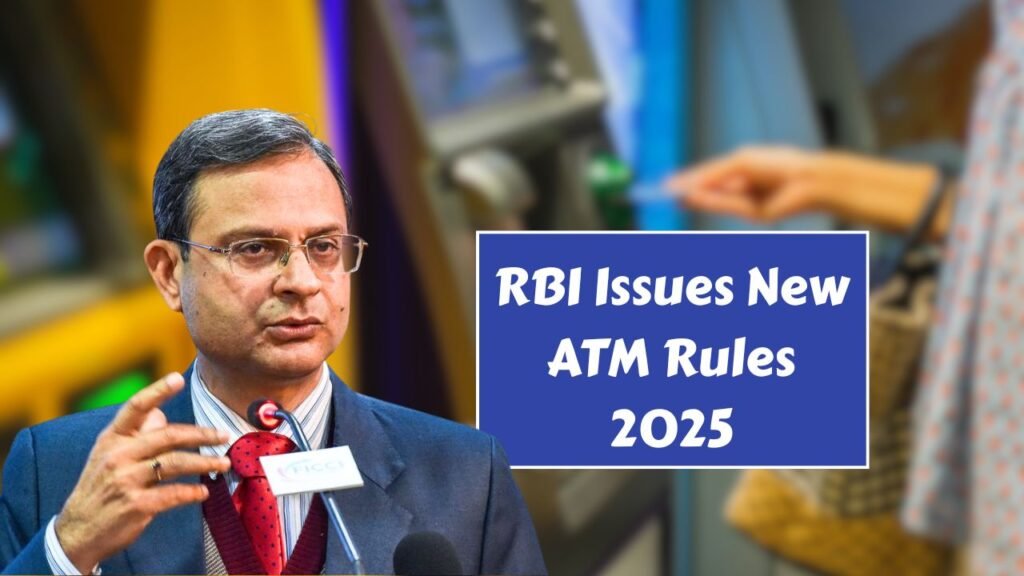In today’s time, most people use ATM cards every day. Whether it is for taking out cash, checking account balance, or transferring money, ATM cards are very important. But now, the Reserve Bank of India (RBI) has introduced new rules. These rules will change how many free times you can use an ATM, how much money you can withdraw, and what extra charges you may need to pay. If you use an ATM often, it is important to know these changes to avoid losing money.
Free Transactions – How Many Times?
Earlier, many people used ATMs many times without counting. Now this can cost extra. According to the new rules, you can use your own bank’s ATM for free only 5 times in a month. This includes cash withdrawal and balance check.
If you use another bank’s ATM, the limit is different. In metro cities, you get only 3 free transactions. In non-metro cities, the free limit is 5 transactions. After this, your bank will charge you for each extra use.
| Type of ATM | Free Transactions Allowed |
| Own Bank ATM | 5 per month |
| Other Bank ATM (Metro cities) | 3 per month |
| Other Bank ATM (Non-metro cities) | 5 per month |
The New Transaction Charges
Another important update is about the fee after crossing the free limit. Earlier, banks charged ₹21 per extra transaction. Now, this has increased to ₹23 plus GST.
This fee applies not only to withdrawing cash but also to non-financial activities like checking balance, mini statement, or PIN change. So if you check your balance at the ATM after your free limit, you will be charged.
Daily Withdrawal Limit Reduced
It is not just about transaction limits. Daily withdrawal limits are also reduced. Earlier, many banks allowed up to ₹25,000 withdrawal in a day. Now for normal savings accounts, the limit is reduced to ₹20,000.
Premium account holders may still enjoy higher limits. But for common customers, this means they need to plan their cash needs carefully. It is better to take out the full amount in one withdrawal instead of making many small ones.
Banks That Have Already Updated Rules
Many banks have already informed their customers about these changes.
- HDFC Bank charges ₹23 plus tax after the free limit.
- Punjab National Bank (PNB) charges ₹23 for financial transactions and ₹11 for non-financial transactions at other ATMs.
- SBI, ICICI, YES Bank, and IndusInd Bank have also updated their charges as per RBI rules.
This means almost all major banks are following the new rules, so customers of every bank will be affected.
What Should Customers Do Now?
With these rules, customers need to use ATMs smartly. Try to avoid many small withdrawals. Instead, calculate your monthly need and take cash in fewer transactions. This will help you stay within the free limit.
You can also use digital payment methods like UPI, net banking, and mobile wallets. These are free, safe, and very easy for everyday payments like shopping or bills.
For balance checks, use mobile banking apps, SMS alerts, or internet banking instead of ATMs. This will save you from paying extra charges.
Why These Changes Were Made
Many people wonder why RBI and banks have made these changes. The reason is that running ATMs costs money. From handling cash to security and machine maintenance, every transaction has expenses.
By limiting free usage and increasing charges, banks want to reduce unnecessary ATM use. They also want to encourage customers to use digital payments. This also helps reduce crowding at ATMs, especially in metro cities.
Final Thoughts
The new ATM rules may look small but can affect your money in big ways. If you are not careful, extra ATM use can reduce your savings slowly. But these changes will also push people to use more digital payment options, which are easy and secure.
So, next time before going to the ATM, think if you can use UPI or mobile banking instead. Plan your withdrawals better and save money.
Disclaimer: The information in this article is based on RBI guidelines and updates from major banks. However, charges and withdrawal limits may differ depending on your bank and account type. Before making any financial decisions, customers should check with their bank to ensure that the information is accurate and up to date.



